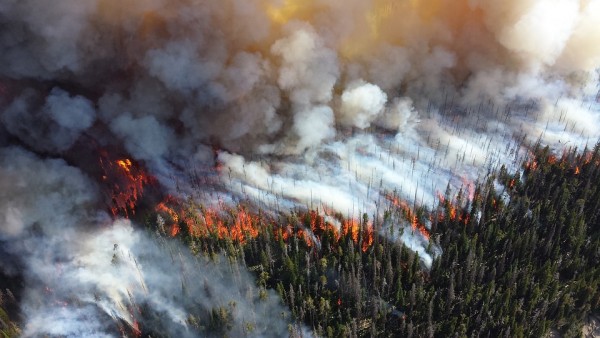By Ana Verayo, | October 11, 2016

Climate change has led to an increase of the area that wildfire destroys annually in the western part of the US.
A new study reveals that forest fires, which have been ravaging the United States, have been twice as large in the last 30 years due to the effects of global warming and climate change.
Researchers discovered that since 1984, drier weather patterns and higher temperatures have been triggering more wildfires, spreading across 16,000 square miles - this is 30 times bigger than Los Angeles.
Like Us on Facebook
The new findings reveal that the western U.S. fire area has approximately doubled in size due to natural climate change between 1984 and 2015.
Scientists have warned that there would be more wildfires in the years to come. According to the co-author of the study, bioclimatologist Park Williams of the Lamont-Doherty Earth Observatory at Columbia, no matter how hard we try, these fires will just keep getting bigger. Since the 1980s, wildfires have been on the rise in the western US.
This year, three million forest acres of land has been burned in the western United States. Scientists warn that the most vulnerable and dangerous conditions are set to come in the next two months.
Last year, some 10.1 million acres burned to the ground in the United States - breaking previous records. That was the largest area ever to be burned in a wildfire since the National Interagency Fire Center of wildfire areas started keeping records in 1983. Firefighting efforts from federal governments also reached a record-breaking high of US $2.1 billion.
According to the lead author of the study, John Abatzoglou of the University of Idaho, firefighters and the California governor are now calling this the "new normal" as they associate these wildfires with climate change.
By studying eight kinds of systems to measure forest aridity or dryness, the researchers were able to come up with numbers using the MacArthur Forest Fire Danger Index, the Palmer Drought Severity Index, and the Canadian Forest Fire Danger Rating System.
However, in this study, scientists overlooked other factors like beetle infestations and tree disease that killed millions of trees, soil moisture changes, early snowmelt or even lightning occurrences that can ignite forest fires. Hence, scientists say that the estimated wildfire area may be lower.
This new study has been published in the journal, Proceedings of the National Academy of Sciences.
-
Use of Coronavirus Pandemic Drones Raises Privacy Concerns: Drones Spread Fear, Local Officials Say

-
Coronavirus Hampers The Delivery Of Lockheed Martin F-35 Stealth Fighters For 2020

-
Instagram Speeds Up Plans to Add Account Memorialization Feature Due to COVID-19 Deaths

-
NASA: Perseverance Plans to Bring 'Mars Rock' to Earth in 2031

-
600 Dead And 3,000 In The Hospital as Iranians Believed Drinking High-Concentrations of Alcohol Can Cure The Coronavirus

-
600 Dead And 3,000 In The Hospital as Iranians Believed Drinking High-Concentrations of Alcohol Can Cure The Coronavirus

-
COVID-19: Doctors, Nurses Use Virtual Reality to Learn New Skills in Treating Coronavirus Patients







